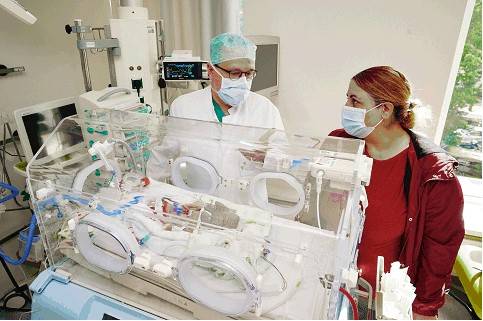Baby born with a heart defect Doctors in Bonn save premature infant with worldwide unique emergency surgery
A team of doctors at the University Children's Hospital in Bonn has successfully treated an infant born with a heart defect using a method that is unique in the world. The boy was born with a life-threatening narrowing of the artery.
A team of doctors at the University Children's Hospital in Bonn has treated a seriously ill premature baby with a procedure that is unique in the world to date. According to the university hospital on Tuesday, a life-threatening narrowing of the artery was removed.
The infant, who was born with a heart defect on April 16, was implanted with a so-called stent in the aorta twelve days after birth. This is a vascular support. The special feature of the procedure was that, for the first time in the world, it was performed exclusively with the aid of so-called echocardiography - a procedure in which the heart is made visible during the operation by ultrasound instead of X-rays. "Because of the size of the stent, this was the only way to control the positioning of the stent," said Martin Schneider, Co-Director of the Department of Pediatric Cardiology at the Center for Pediatrics. "Because of the low body weight, surgery would have been too risky." Because of the minimal radiation, the operation was performed under the control of ultrasound. Only a few hours later, the little patient was able to breathe on his own again.
Even before the birth it had been recognised that the aorta was narrowed. As a result of the disease, the lower half of the body would not have been supplied with sufficient blood and there would have been a risk of severe kidney and intestinal damage. At birth, the little boy weighed only 1200 grams. Because his poor growth and a threatening lack of oxygen had already been noticed in the womb, the birth was induced in week 33 of the pregnancy.
Original text: Andreas Dyck
Translation: Mareike Graepel



